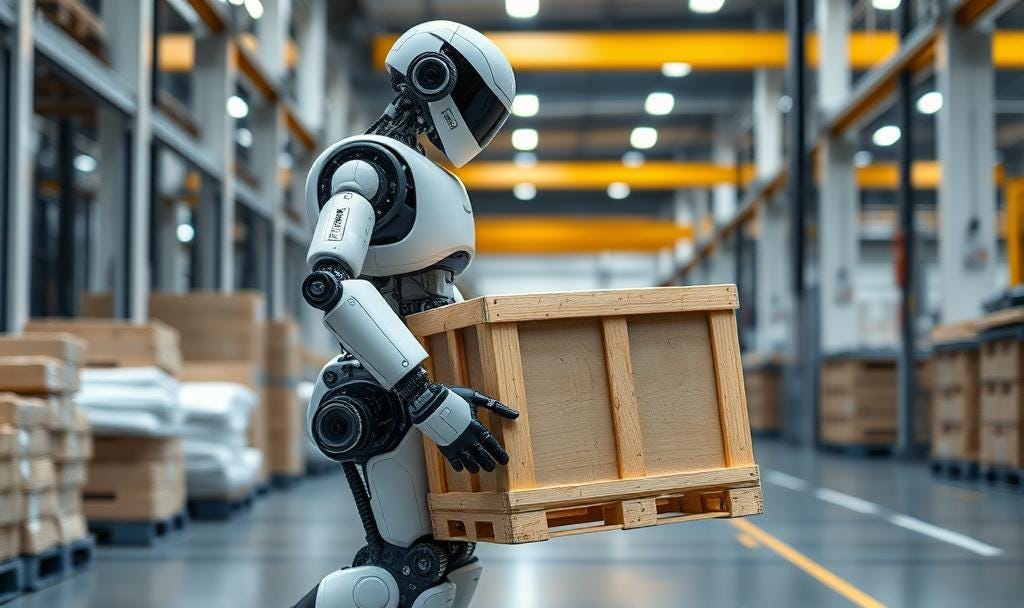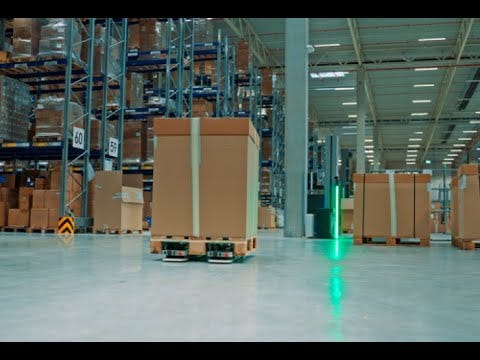Humanoid robots: from science fiction to factory floors and warehouses
Insights on the latest developments in the world of autonomous mobile robots
Humanoid robots — once the stuff of science fiction — are closer to becoming a practical reality across industries. Recent advances in artificial intelligence, robotics, and sensor technology have propelled bipedal, dexterous robots out of the lab and into real-world pilot programs.
These machines are now being trialled in factories, warehouses, and even hospitals, signalling a new era where robots may soon work side by side with humans in dynamic, unstructured environments.
Several converging trends are driving the rapid progress and deployment of humanoid robots, according to a new report from the consultancy Bain & Company, titled Humanoid robots at work: what executives need to know.
Human-level Mobility and Dexterity: Today’s humanoid robots can walk, jump, and navigate complex terrain. Enhanced by AI, their fine motor skills now approach human precision, enabling them to manipulate objects and perform intricate tasks once thought impossible for machines.
Simplified training and management: Thanks to natural language AI, robots can be trained using spoken instructions rather than specialized coding. Their human-like form allows them to learn directly in the environments where they’ll operate, reducing the need for costly retrofits or custom infrastructure.
Cost parity with human labor: Between 2022 and 2024, the unit cost of humanoid robots dropped by at least 40 percent. Some models, such as Unitree’s $16,000 robot, now match or undercut the annual cost of a minimum-wage worker in the US, making them economically viable for a wide range of employers.
General purpose intelligence: Advances in generative AI and multimodal data analysis are enabling robots to respond autonomously to unpredictable changes in their surroundings, expanding their usefulness far beyond repetitive automation.
Major manufacturers and logistics companies are leading the charge in deploying humanoid robots. Automotive giants like BMW, Mercedes-Benz, and Toyota are piloting robots on assembly lines, where they handle monotonous and physically demanding tasks.
In warehouses, robots such as Agility Robotics’ Digit are being tested by Amazon and GXO Logistics to sort packages and transport goods, demonstrating their ability to operate in crowded, ever-changing environments.
NEURA Robotics has just struck a partnership with Hyundai Samho to develop quadruped and humanoid robots for use in shipbuilding.
These pilots are not just about novelty — early results show significant productivity gains. For instance, BMW’s deployment of the Figure 02 humanoid robot at its Spartanburg plant reportedly delivered a 400 percent efficiency boost in targeted tasks. As labor shortages intensify and the cost of human labor rises, more companies are expected to follow suit.
Hospitals and elder care facilities are also experimenting with humanoid robots. In China, a large-scale program is deploying 200 humanoid robots in nursing homes, where they assist with daily chores, monitor residents’ health, and provide social interaction. In US hospitals, robots like Moxi are already delivering medications and lab samples, reducing staff burnout and freeing up nurses for direct patient care.
While robots are not yet performing direct clinical tasks, their ability to handle logistical and support roles is proving invaluable. Early deployments have saved thousands of staff hours and improved operational efficiency, offering a glimpse of how robots could help address chronic labor shortages in healthcare.
Market forecasts anticipate steady growth in humanoid robot deployment through 2030, with a rapid uptick expected thereafter. Industry projections suggest the global market could reach $38 billion to over $200 billion by 2035. Funding for humanoid robotics start-ups has soared, rising from $308 million in 2020 to $1.1 billion in 2024, as both tech giants and specialized firms race to commercialize the technology.
For business leaders, the message is clear: while it may be too soon for mass adoption, the technology is maturing fast. Companies with physical operations should begin experimenting with prototypes and strategizing for a future where humanoid robots are a competitive necessity, according to Bain’s report.
Understanding the pace of technological change, regulatory developments, and workforce impacts will be critical for those aiming to stay ahead.
Humanoid robots are not poised to replace entire workforces overnight. But their growing dexterity, intelligence, and cost-effectiveness mean they will soon take on a meaningful share of physical jobs — reshaping industries, addressing labor shortages, and redefining what it means to work in the 21st century.



